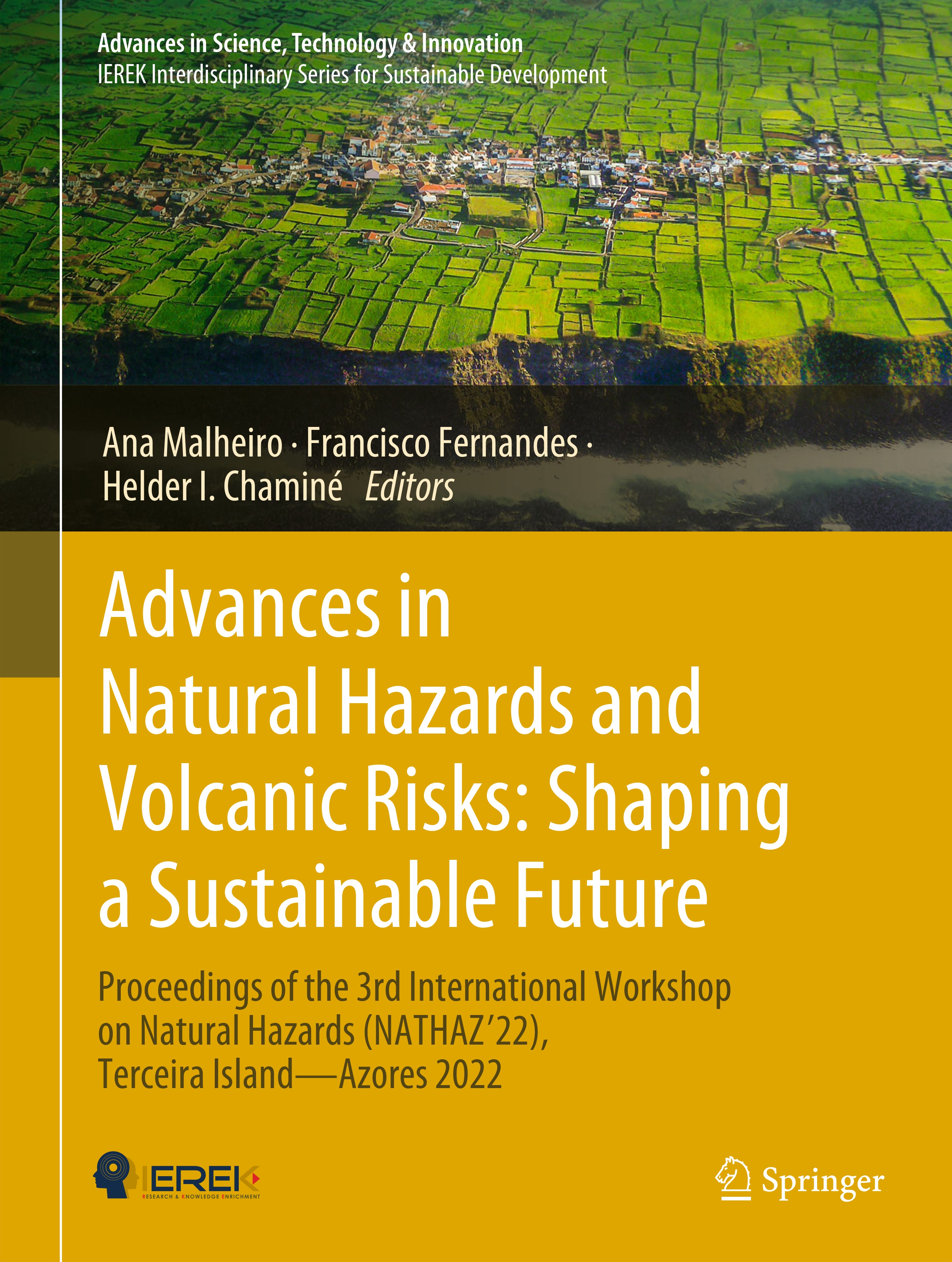
Preface
The morning was cool, but the dawn slowly began to reveal the curves of the mountains and the contours of the sea cliffs. Despite the choppy seas and a little veil offog hovering over the mountain, the day looked promising.
—Nemésio 1944 (translated by Fagundes 2019)
This volume comprises the proceedings of the 3rd International Workshop on Natural Hazards (NATHAZ'22), held in Angra do Heroísmo City, Terceira Island, Azores, during 26—27 May 2022. The book follows the second edition of the NATHAZ'19 Workshop (Pico Island, Azores) successfully published, in 2020, by IEREK Springer ASTI Series (details in Fernandes et al., 2020). Thus, both spots are unique for discussing and sharing problems to advance knowledge of natural hazards and risks.
The Azores plateau is positioned as a unique geodynamic framework at the triple junction among the American, Eurasian, and African tectonic plates (e.g., Self 1976; Kueppers and Beier 2018). Many natural hazards impact the geodynamic setting of the Azores archipelago in the middle Atlantic Ocean, such as earthquakes, volcanic eruptions, landslides, floods, coastal erosion, and damage to engineering works (e.g., Malheiro 2006; Malheiro and Nunes 2007; Fernandes et al., 2020; and Chester et al., 2022). The volcanological testimonies from 1586 to 1590 by Gaspar Frutuoso (1522—1591) remain a crucial milestone in the natural framework of the Azores and Macaronesian region (see Frutuoso 2022). Terceira island includes various volcanic systems and a fissural deep zone delineated by alignments of small volcanic cones, lava domes, and fault zones. Terceira island is also unique because of the rural landscape, the natural reserves, and the natural lakes. Additionally, the historic downtown of Angra do Heroísmo city has been a UNESCO world heritage since 1983.
The book provides a comprehensive overview of topical advances on multi-hazard issues highlighting volcanic contexts, including the bridges between volcanic crisis, disaster management, societal concerns, and geoethics. In addition, the 3rd edition NATHAZ international workshop offered an excellent chance to debate natural hazards, particularly volcanic risks and other hazards, such as seismological, hydrological, and geotechnical issues. Finally, the volume underlines current volcanic risks and other hazards research trends, i.e., risk mapping, assessment and management, forecasting catastrophic events, societal impacts, and geoethical issues. That approach is the key milestone in the natural hazards studies pointing out a harmonious design with nature, sustainability, and society, but with geoethics (McHarg 1992, González de Vallejo 2010, Pepolloni and Di Capua 2022).
Natural hazards result from a threat of natural events that will endanger societies and ecosystems. Risks underline processes or actions, natural or technological, that gain socio-economic significance and territorial representation. However, until the 1970s, the international community understood natural and technological disasters as exceptional circumstances to which it was generally necessary to respond with emergency foreign aid. Natural disasters have a destructive impact. The natural hazards and disasters are various, such as earthquakes, volcanic eruptions, landslides, rock falls, floods, and coastal erosion.
Anthropogenic hazards result from anthropic interactions with nature. Finally, technological hazards happen because of exposure to hazardous substances (IASC 2006).
The data, processes, and dynamics of geosystems in a volcanic context include a thorough knowledge and assessment of climate, geology, morphotectonics, hydrology, volcanology, and social sciences. Hence, it is essential to encourage comprehensive studies on hazard and risk assessment and disaster management to undeltake multi-hazard mitigation. Also, it underlined the climate variability and change in Earth's systems. Furthermore, the book highlights the role of geoethics and social geosciences as the missing piece to a clear understanding of the responsibility between hazard volcanologists and policy and decision-makers dealing with natural crises.
This volume is expected to outline natural hazard learnings from Europe, America, Asia, and the Atlantic islands. The case studies highlight new understandings of the description, evaluation, and modelling of georisks, multi-hazard systems, engineering, and geoethical issues. The scientific committee comprises lead geoscientists, natural hazards-related practitioners, and academics worldwide.
Key topics comprise the following: (i) Multi-hazards and risks: sustainable society and disasters; (ii) Natural hazards and assessment: rock falls, landslides, and urban planning and management; (iii) Sustainable Earth systems, hazards, and climate change; (iv) Terceira island geology and geodiversity: volcanological hazards.
The volume has a set of 37 chapter books, including the field trips around geology, geodiversity, and natural hazards of Terceira island led by João Carlos Nunes and Adriano Pimentel and four remarkable keynote lectures by Silvia Pepolloni (Italy), Joan Martí (Spain), Gordon Woo (UK), and David Chester (UK). The book was assembled over 154 authors from the academy, research centres, agencies, and companies. In addition, it was involved in a peer-review process with more than 68 reviewers.
The volume is a useful source for researchers and professionals in geosciences, volcanology, natural hazards, geomorphology, geotechnics, engineering, geoethics, and social sciences. So, it is a valuable asset to experts, students, and natural hazard-related practitioners.
Ponta Delgada, Azores, Portugal Ana Malheiro
Ponta Delgada, Azores, Portugal Francisco Fernandes
Porto, Portugal July 2022 Helder I. Chaminé





